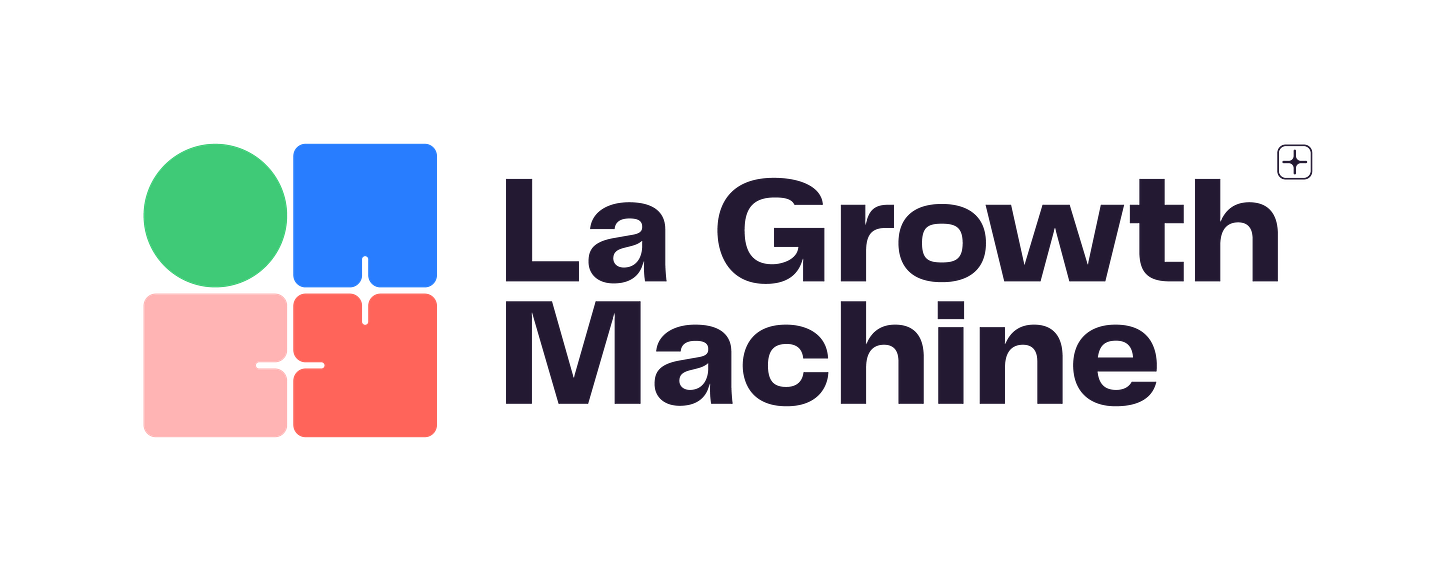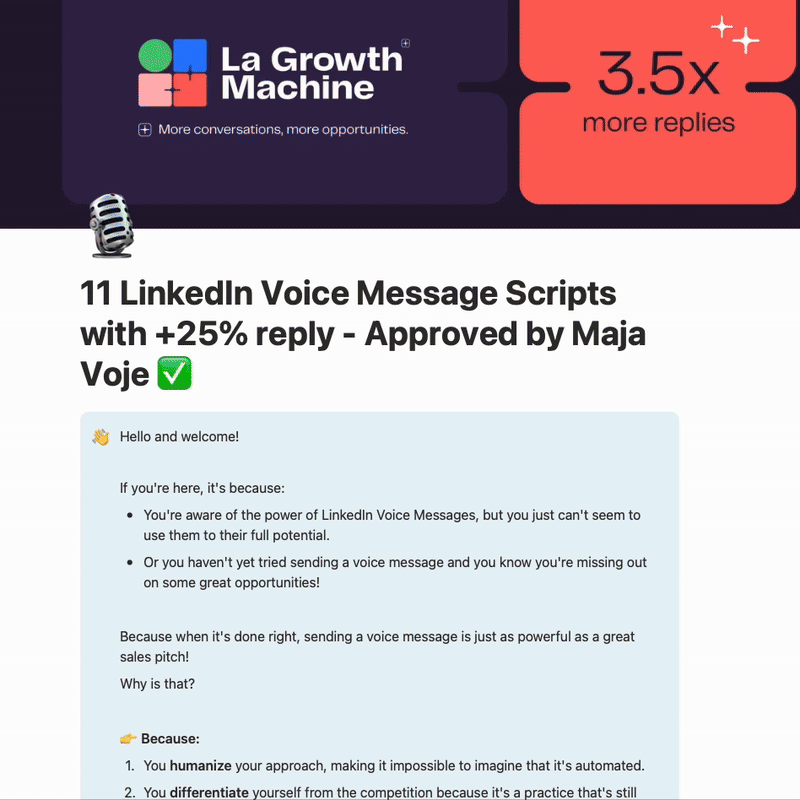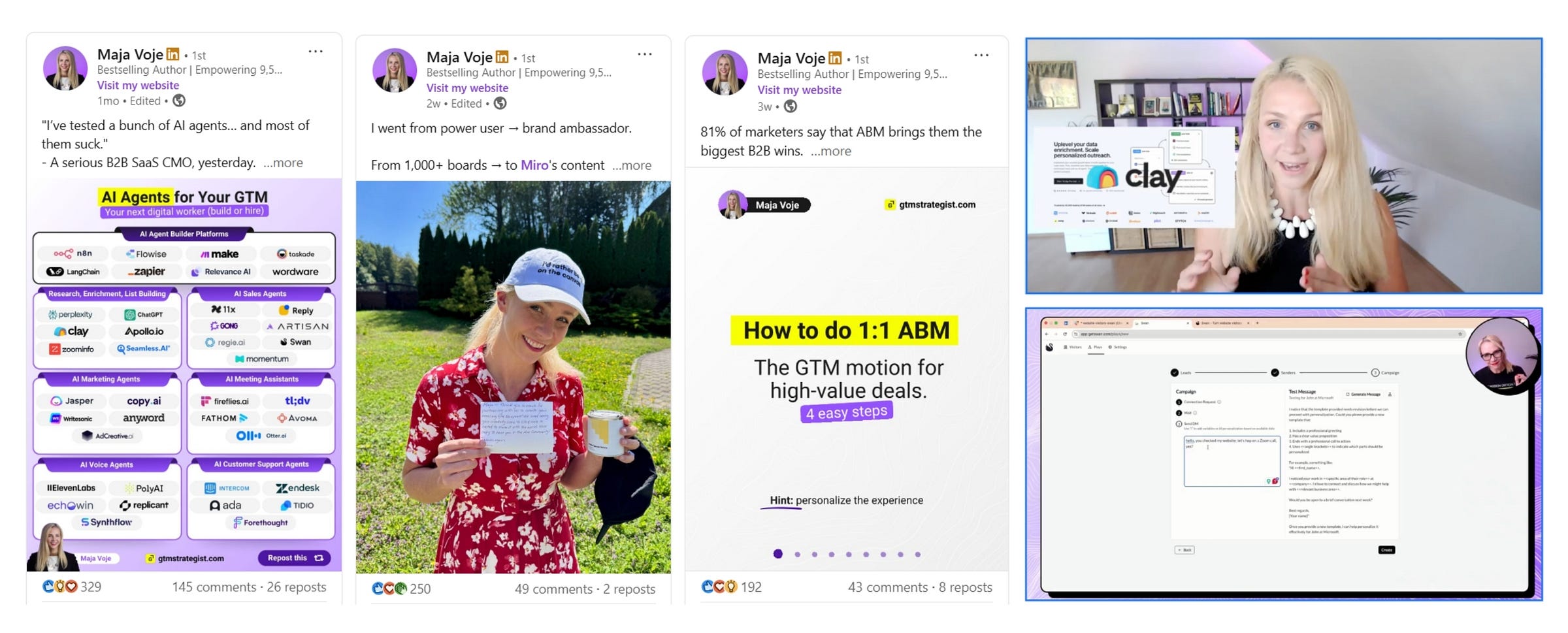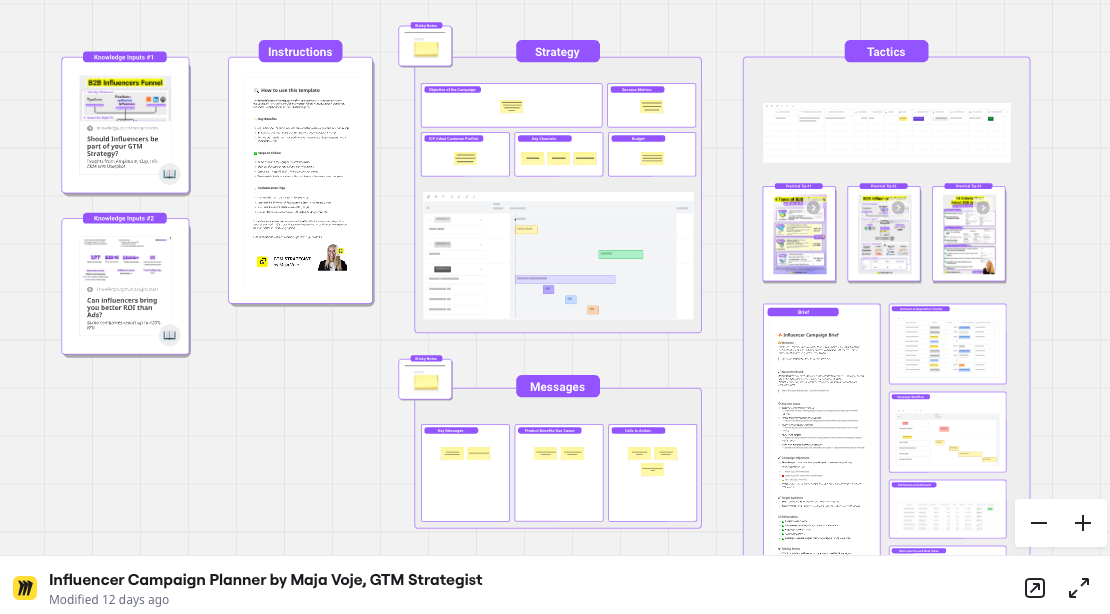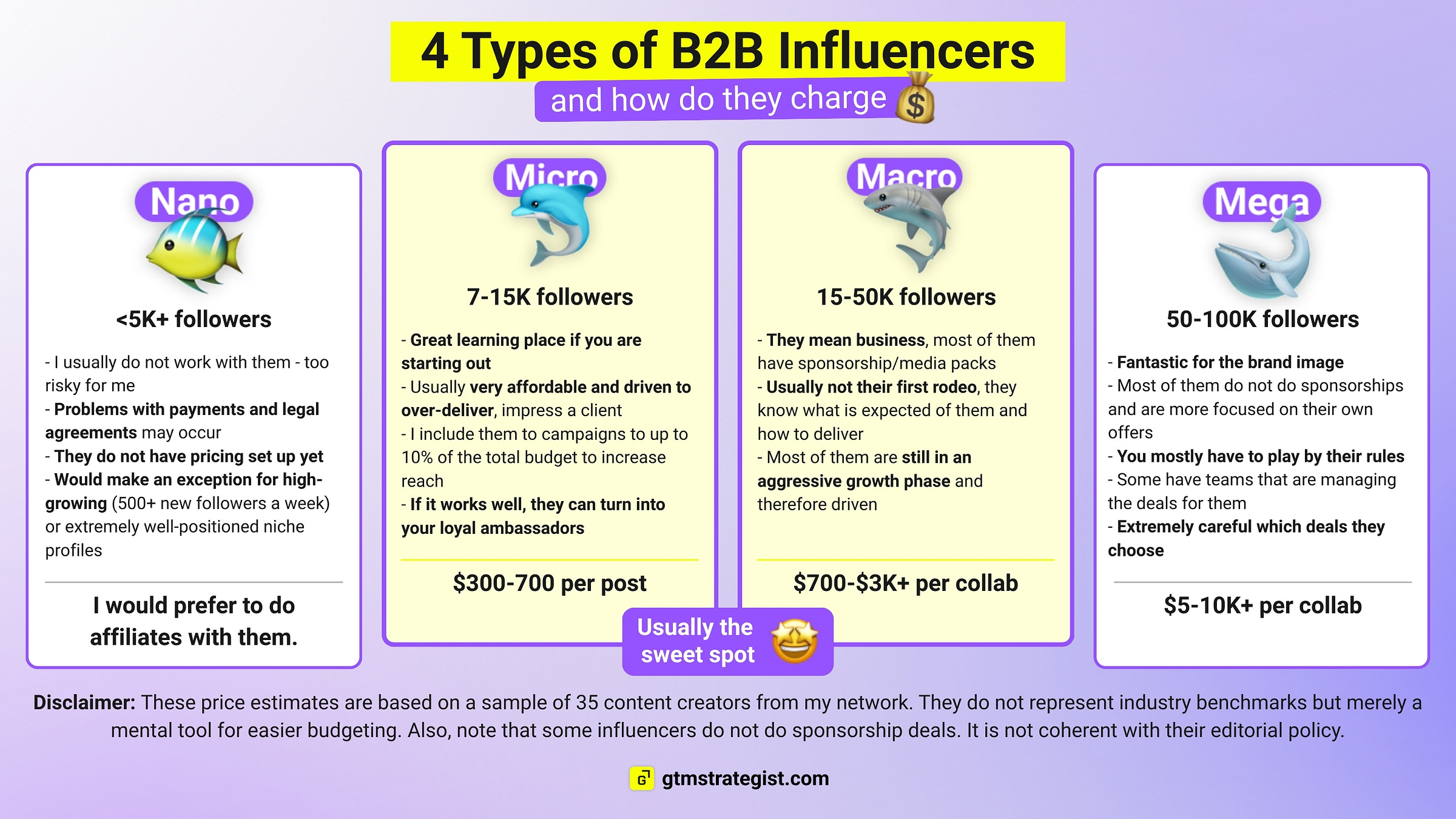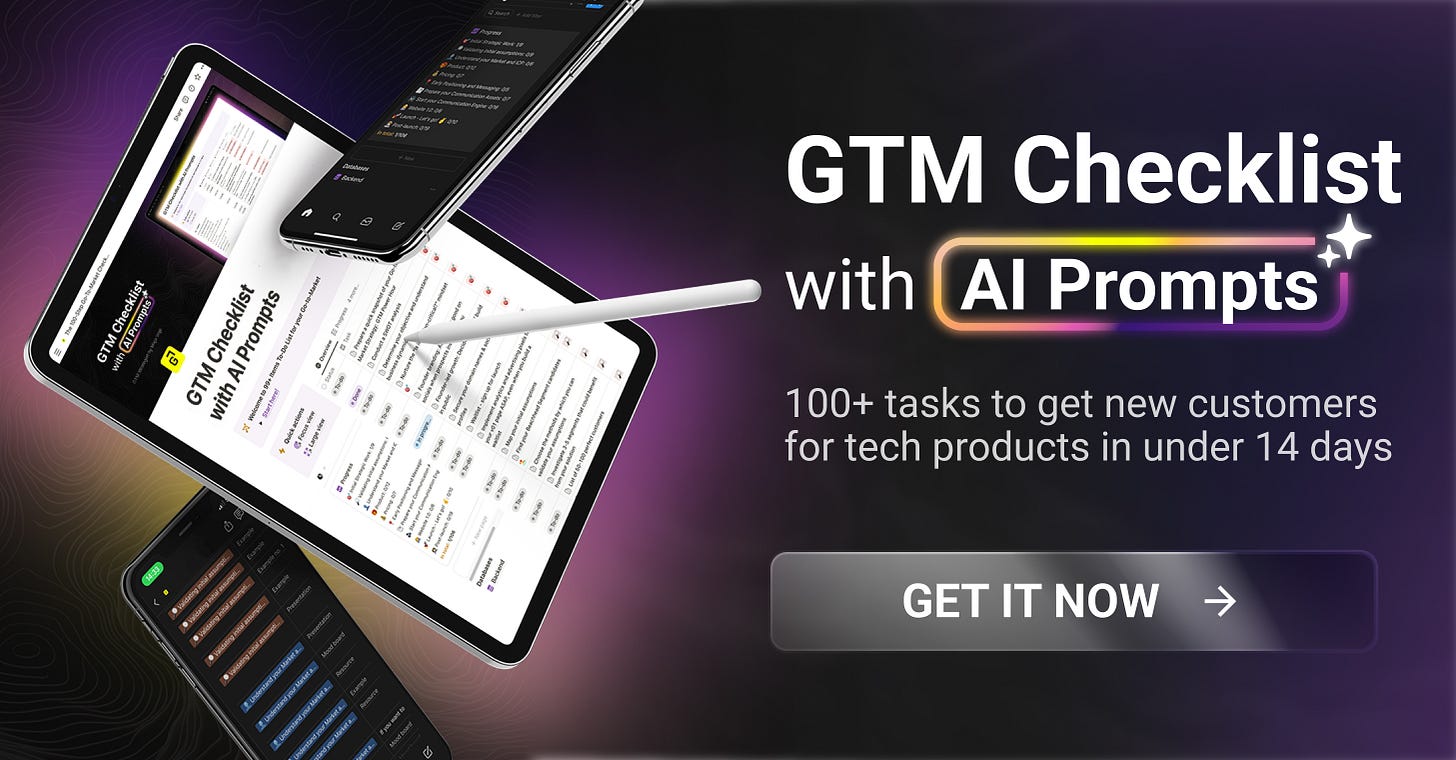5 Pillars of Successful Influencer Marketing Campaigns
What I learned from mega brands such as Miro, Amplitude, and HubSpot + free tool inside
Dear GTM Strategist!
As the teams that I am working with search for new ways to launch and scale their products, influencer campaigns often pop up as an “interesting idea”.
It is one of the more effective GTM actions for getting strong traction fast - especially if you are launching, for B2B and B2C alike. Influencers, in combination with some advertising budget to fuel the reach, could be enough to help you validate a new market.
68% of B2B marketers say influencer marketing drives higher-quality leads than any other paid channel (Demand Gen Report, 2024).
While “go where the audience is” and “leverage trust the creators have” makes a whole lot of sense, many companies in my network complain that it is hard to “make it work” and even harder to scale.
Before you go ahead and email 35 YouTubers that have reviewed your competitor that you want a demo too, spend a couple of minutes crafting the influencer marketing strategy to make sure you join forces with the right creators and actually create a ROI-positive campaign.
In this post, you’ll get:
5 best influencer collaboration practices based on my 30+ collabs - what do most successful companies do differently and how you can apply that too.
My Integrated Influencer Campaign Planner - a free tool that will help you define the objectives, streamline the process, and track the performance.
My predictions 🔮 on why this GTM tactic will be alive and well in years to come, and what formats do I recommend you to test when you’re working with influencers.
I initially developed this framework for a client who was kicking off their first influencer marketing campaign. Then I published it to Miroverse as a free board, so it can help more teams.
If that sounds like a good use of your time,
Let’s rock and roll 🤘
This newsletter is sponsored by La Growth Machine.
Are you tired of LinkedIn outreach that gets ignored? Try sending voice messages instead. 🎤
They feel personal and consistently drive up to 2x more replies. And the best-kept secret: they can be automated.
To make it easy for you, La Growth Machine prepared a free resource: 11 LinkedIn Voice Message Scripts with 25% reply rates - complete with best practices on tone and delivery.
The question I hate: “Maja - are you an influencer?”
No, I do not identify as an influencer- but funnily enough, I’ve been on all sites of influencer campaigns:
I’ve created content with brands
I negotiated influencer deals with clients
I paid for influencers and worked with them
Had to calculate ROIs of these campaigns and budget for them
Even advised 3 influencer marketing tools on how to go to market 🤷
So yeah, I’d say that I have a pretty good understanding of what is going on in the arena. Over the last two years, I have collaborated with more than 30 brands, creating some fantastic content together. With many, we have become close and are developing long-term collaborations, often meeting personally and outside the scope of our commercial projects.
While working with founders, CMOs, influencers, managers, and their agencies, I learned five lessons that most successful companies do differently and diligently.
The first thing we discuss at every meeting is the ICP-fit and their goals. We will compare data - not “we think that we have a good match”.
They all provide extremely detailed briefs and offer demos, onboarding, and product access, so I can really understand their products. I test all of the products I recommend on my business or clients - this is a non-negotiable for me. And I think it should be for everybody working in the B2B space.
We co-create content plans and content together, and they will always appreciate my recommendations of what would work best for them since they trust that creators know the audience best. I get fantastic assets from them and access to their world-class talent that would probably never respond my “hey - wanna do a Substack together” pitch.
Most successful brands think beyond one-time collaborations. They do not see creators as “billboards”; they are searching for brand ambassadors who co-create content with them and are power users of the product, attending events. We create very meaningful relationships.
They care so much. They typically assign at least one of their team members to be there for creators. They are not relying on agencies to “just get the job done” instead of them. They work closely with their agencies and creators to align multiple collaborators that they work with. Most brands I work with have 10-30 ongoing influencer collaborations - some have hundreds.
I’ve also seen some horrible business practices that I’d never recommend you use.
Avoid these mistakes:
💥 Outsourcing EVERYTHING to an agency or a freelancer who “does the job of getting you those 5 posts you want within your budget” without even understanding your product and ICP.
💥 Working with money-grabbing shitfluencers who will publish anything without the slightest concern what partners will get out of a collaboration - yup those “I open your website and take a selfie” people.
💥 Send detailed scripts to influencers to read your media message and post it to socials - you can just use AI for that (ElevenLabs has some pretty sweet avatars #notsponsored), it will probably be more authentic.
💥 Influencers not responding to messages and delaying their posts or simply disappearing when they should post.
💥 Brands being so slow and annoying/reviewing in and approving the materials that the whole enthusiasm of working together fades … or extends the collaboration to 2 months instead of weeks.
Ufff - rant over 🧘, sorry, but this stuff really makes me mad because I think influencer marketing is an excellent channel that works well, and I do want to contribute to its good name. Now - let’s craft your Influencer campaign together.
⚒️ FREE Tool: Integrated Influencer Campaign Planner
I initially created this framework for one of my B2B high-tech consulting clients that is launching their first YouTube and LinkedIn campaign, but it could help many more teams, so I asked for their permission to publish it in Miroverse so you can take it for a spin too.
Inside, you’ll find:
✓ Strategic planning section
✓ Influencer fit criteria
✓ Outreach scripts
✓ Campaign tracker
✓ Reporting dashboard layout
I hope you will enjoy this playbook.
But before you hop right in, I have a couple of sidenotes just for you:
Tools for influencer selection are less relevant than if you just ask your audience who is the influencer you trust/get the best idea from. Getting new followers with viral posts and participating in engagement pods does not make someone influential. The only thing that matters is if they are or could appear to be trustworthy to your ICP. Filter everything through that lens.
The influencers campaign brief I share in the framework is a ChatGPT-generated summary of some of the best briefs that I have received as an influencer - I put 10+ examples of good briefings there and anonymised it.
The tables are derived from real sheets that we use to track $20,000+ influencer campaigns
In the template, you will also find recommended pricing for different levels of influencers (nano, micro, macro, mega)
There are messaging examples and event tips on how to get some free coverage, if you’ll explore the articles in the template.
How big should your creators be — and what should you pay?
Start by choosing the collaboration format: a simple shout-out/post (lower cost) or higher-engagement formats like webinars, live demos, and co-created assets.
Follower count isn’t the main criterion - ICP fit is. Always request an audience breakdown (reach and geography), review engagement quality on sponsored posts, and ask for outcomes from past promotions. I’ve seen niche “nano” creators with a few thousand followers generate real pipeline while 100K+ generalists fall flat.
Here are some ballpark figures and characteristics for different sizes of influencers:
And since 2025 seems to be the year of “everything is dead” “nothing works,” and “AI will take all jobs” echoing - let me wrap this one by sharing some closing remarks on why I think Influencer marketing will work well in 2026 and beyond.
🔮 Why I am bullish on influencer marketing as a GTM Tactic in 2026 and beyond
Influencer marketing has always been and will continue to be about trust and credibility.
When I bought a house in a village and moved there, I needed a new hairdresser.
I asked my aunt and neighbor for recommendations.
For the last three years I have been going there.
They were my influencers.
Now apply the same logic to a 50-100K audience.
A creator has spent years nurturing content, interactions, and free value.
(For those who might be interested, that is a workload of 10-40 hours a week.)
Many of my friends work in e-commerce advertising.
2-5 years ago they were recruiting influencers like crazy, pouring Meta budgets into using their posts in their advertising campaigns.
Their initial reach mattered less than how their ads performed with their creatives.
Many of those influencers have been successfully replaced with AI in the last 2 years.
Before: Coordinate with everybody, send them materials, and approve creatives
Now: Develop a couple of proven prompts and test 1000s of creatives at the same time to perfect them.
Typically I’d joke that whatever happens in performance marketing e-commerce comes with 3-5 years delay to B2B. Not this time.
Buying a $100,000/year software contract is different from buying a body shaper from Instagram ads.
The buyer journey, the level of trust, onboarding, and the evidence required, as well as the financial consequences of taking the wrong decision… the stakes are high.
No, AI-generated videos and fake LinkedIn profiles with artificially grown 100K+ audiences will not replace B2B influencers with deep expertise in complaints and strong communities anytime soon.
My prediction actually is that trusted brand ambassadors and marketing partners will become more important in the world of AI-deep fakes, where trust is violated on every scroll.
Feel free to challenge my assumption in comments; I love to exchange views.
Here are some of the collaborations I am planning in Q4:
For the third time in a row, I was invited to speak at Product Drive by Userpilot <3. The keynote How AI Agents Go to Market (and why it’s nothing like SaaS) is a synthesis of my discoveries working almost exclusively with AI agents for the last year and a half. This year, I am happy to share virtual stage with Elena Verna, Kyle Poyar, Leah Tharin and many other amazing experts. You can register (free, online event) here.
I will join Miro in person in NYC at their mega-event Canvas 25 in October. This year’s event aims to crack the code on AI collaborations. Miro will launch a bunch of exciting features, product updates and use cases that I will gladly share with you later.
Momentum and I will host an AI GTM webinar together (more info soon)
ZoomInfo will share their most comprehensive signals list that helped them become a billion-dollar category leader.
And SO much more …
👏👏👏 to all our partners who help us keep this Substack free, insightful and fun.
Hope you liked this one and found some interesting ideas that you can apply to your business.
If you did - hit me a like on LinkedIn or ♥️ in on Substack so I will know that you find this topic interesting and I can plan more of such content in the future. ✌️
📘 New to GTM? Learn fundamentals. Get my best-selling GTM Strategist book that helped 9,500+ companies to go to market with confidence - frameworks and online course included.
✅ Need ready-to-use GTM assets and AI prompts? Get the 100-Step GTM Checklist with proven website templates, sales decks, landing pages, outbound sequences, LinkedIn post frameworks, email sequences, and 20+ workshops you can immediately run with your team.
🏅 Are you in charge of GTM and responsible for leading others? Grab the GTM Masterclass (6 hours of training, end-to-end GTM explained on examples, guided workshops) to get your team up and running in no time.
🤝 Want to work together? ⏩ Check out the options and let me know how we can join forces.




